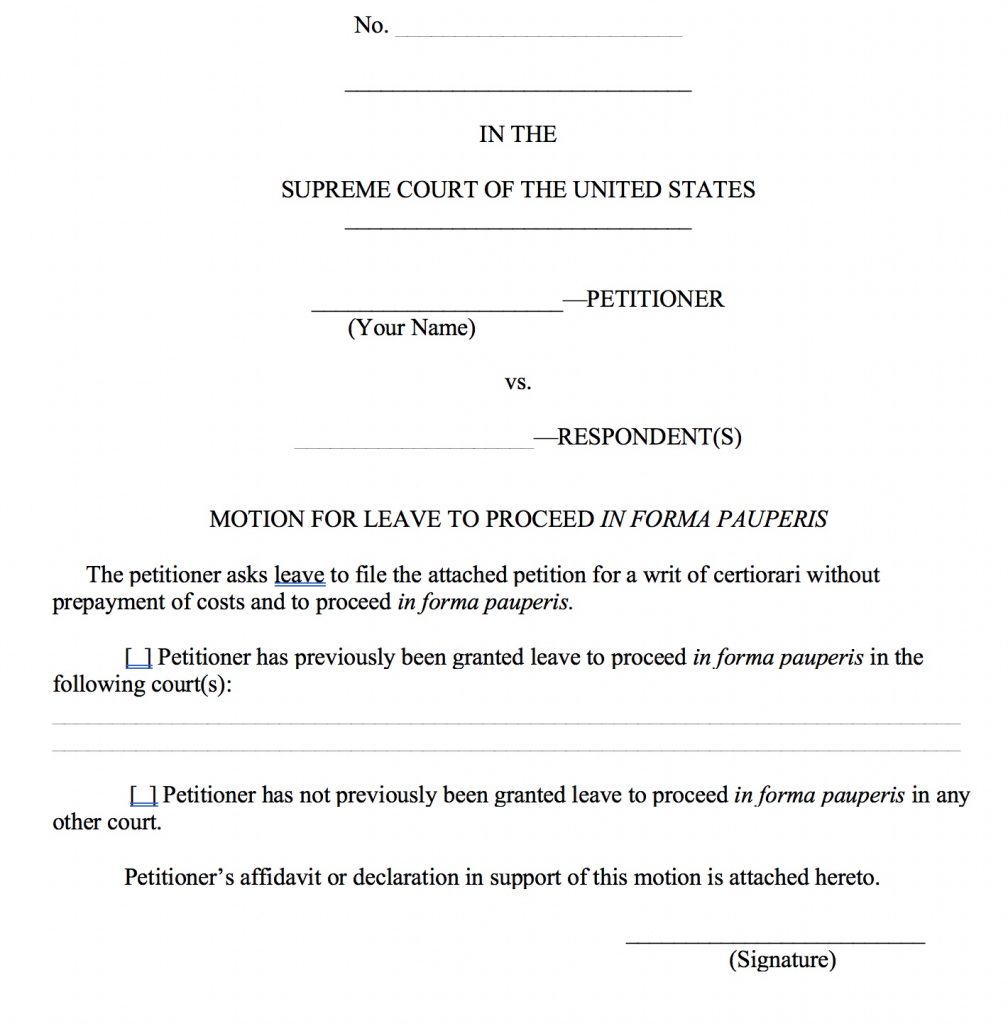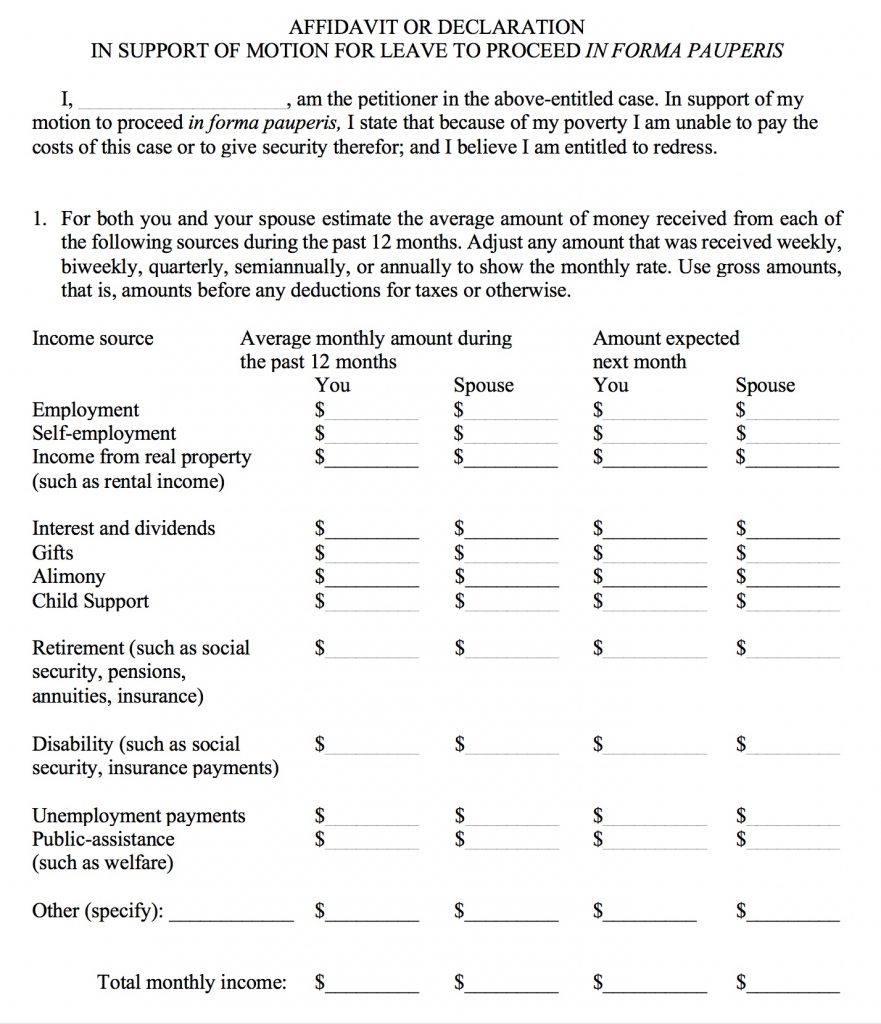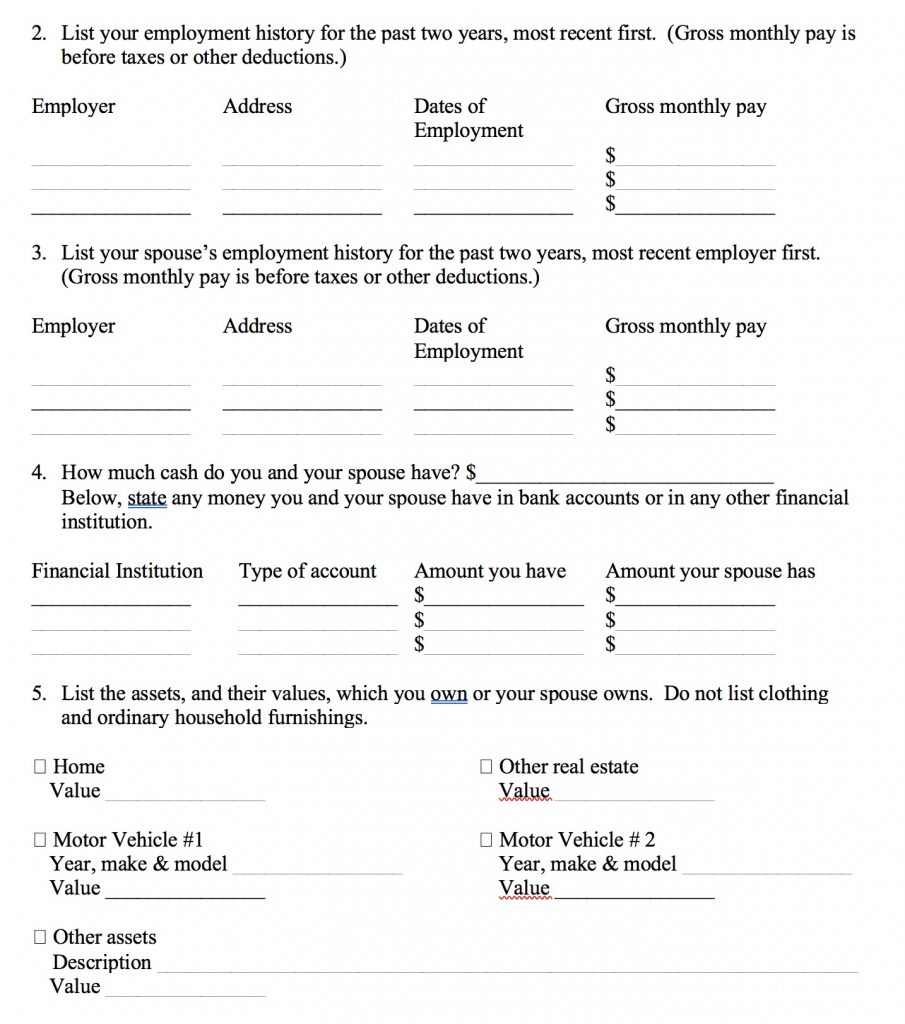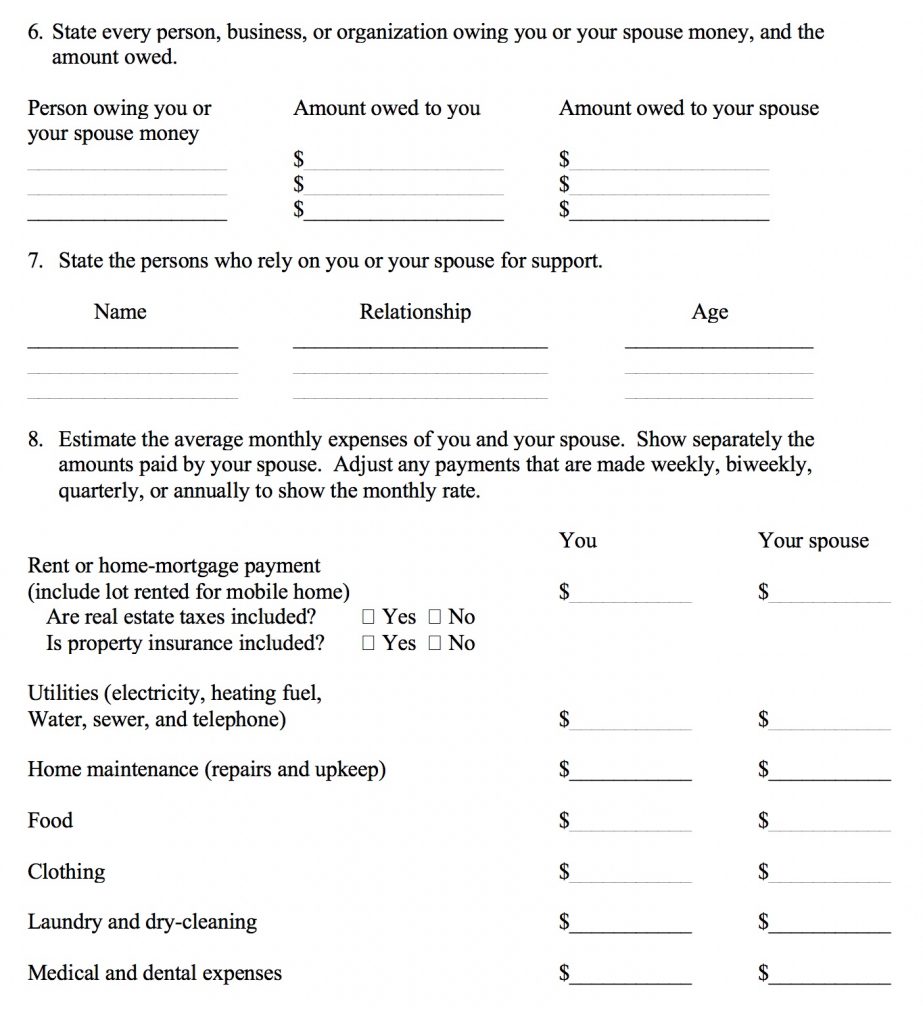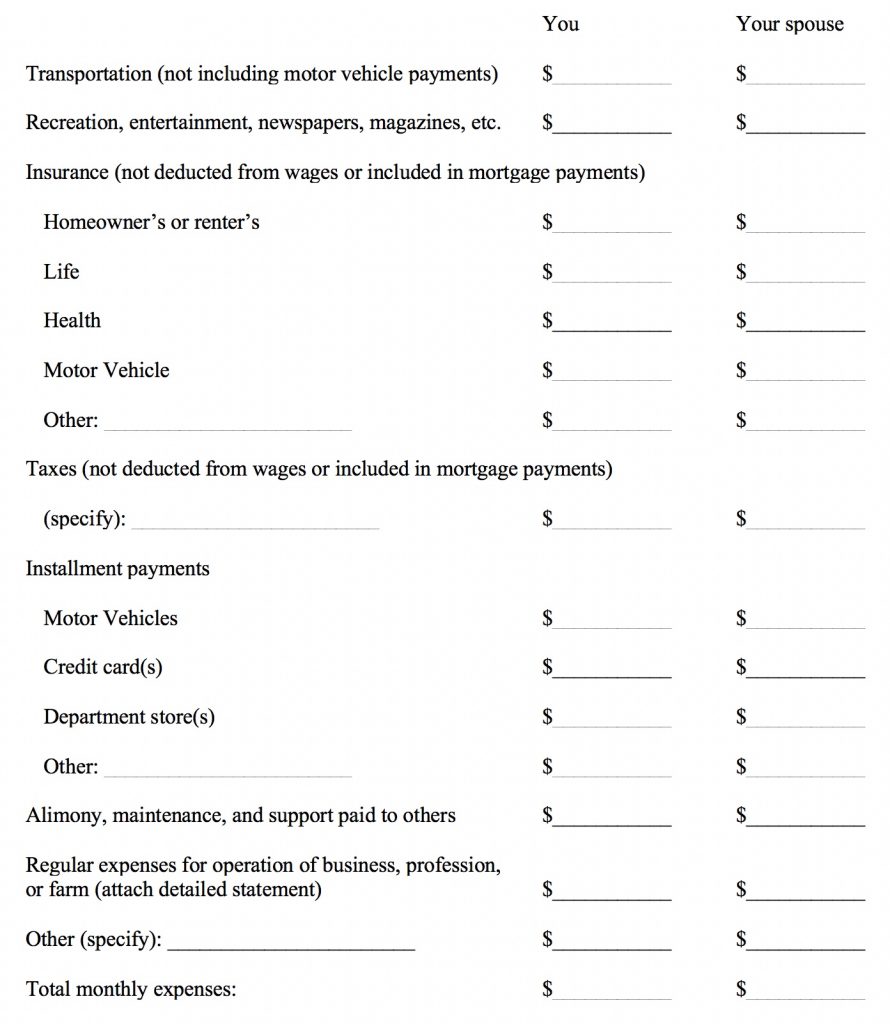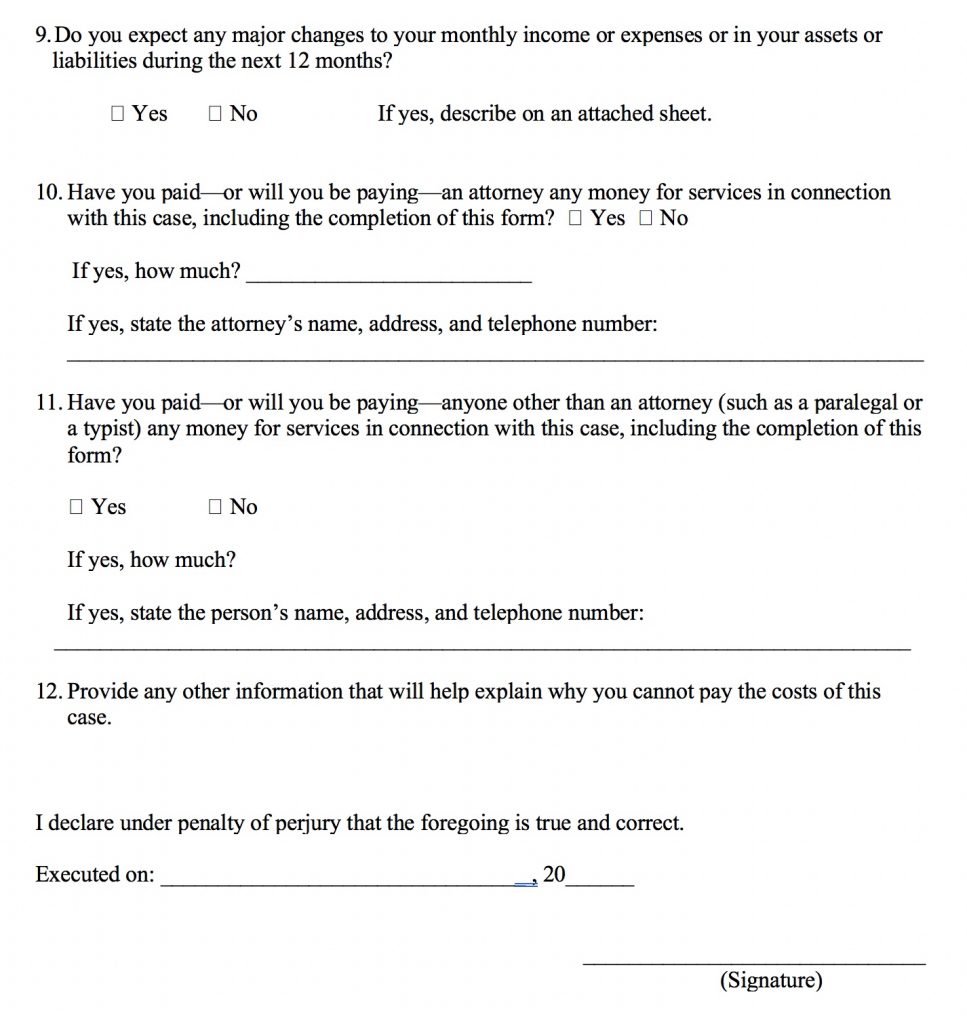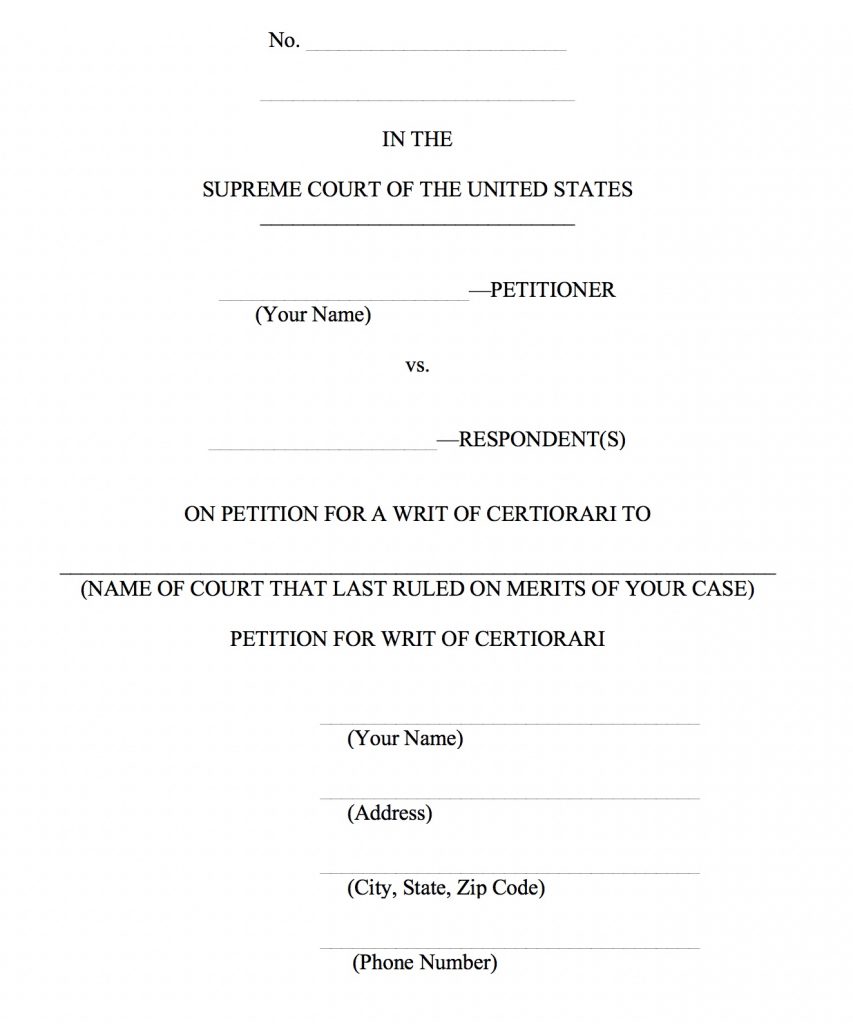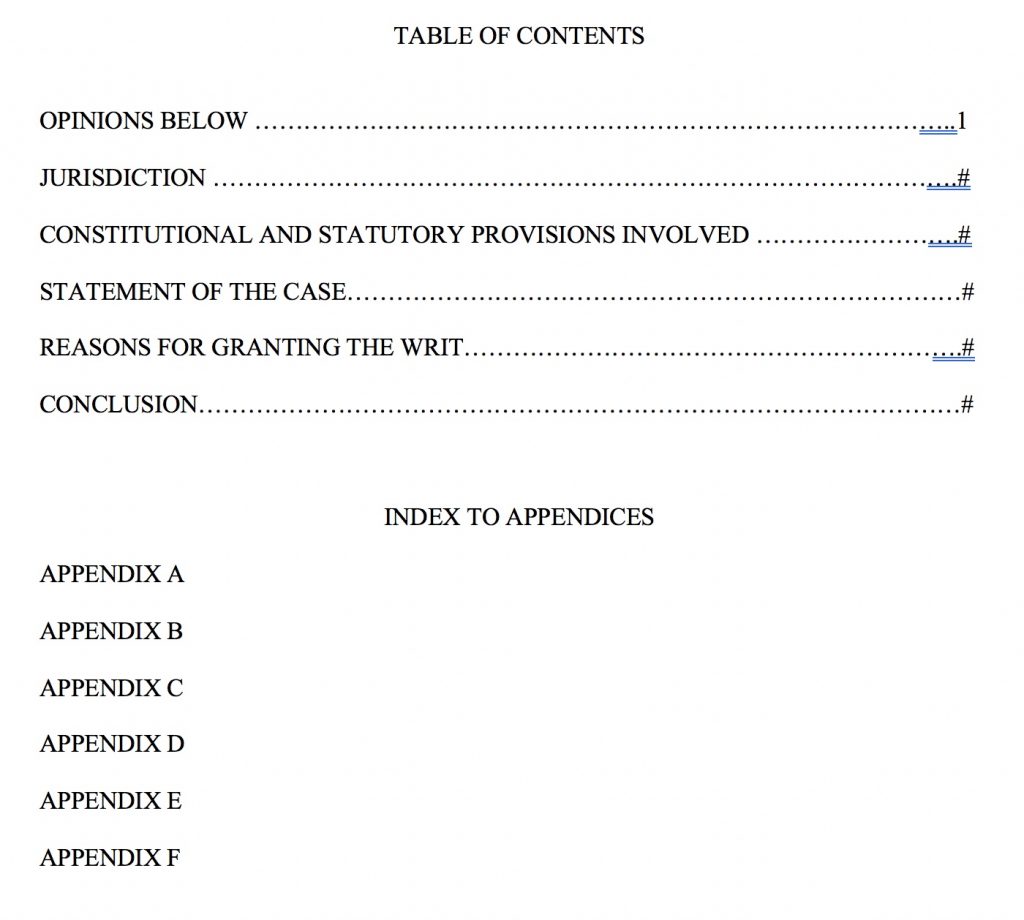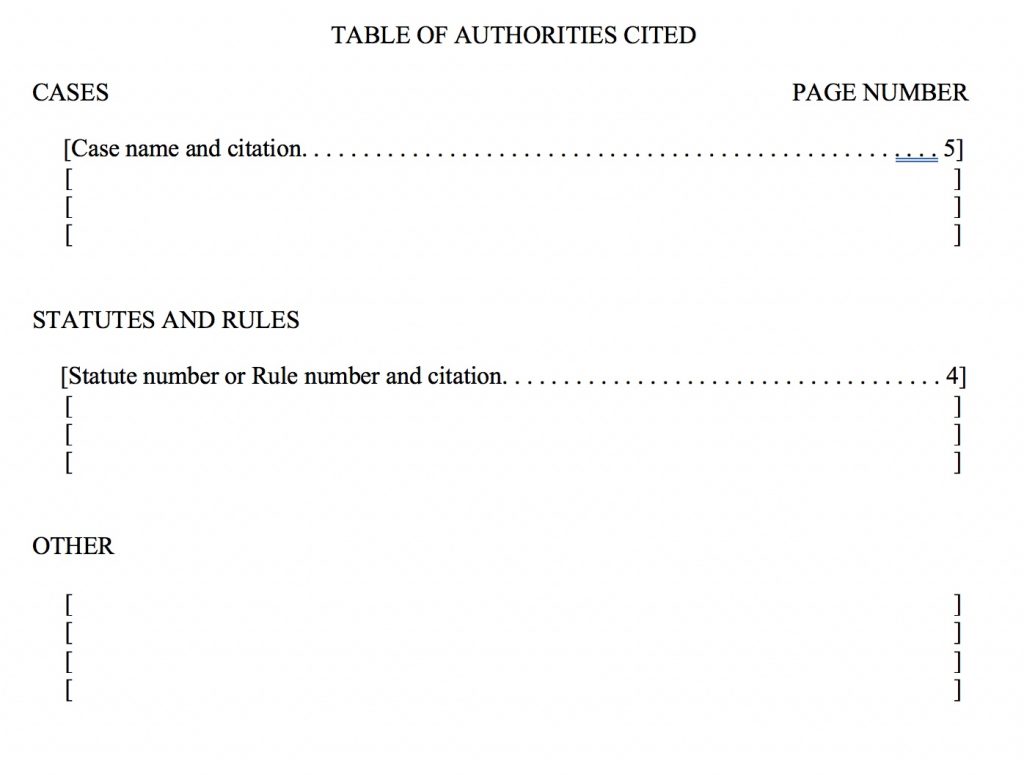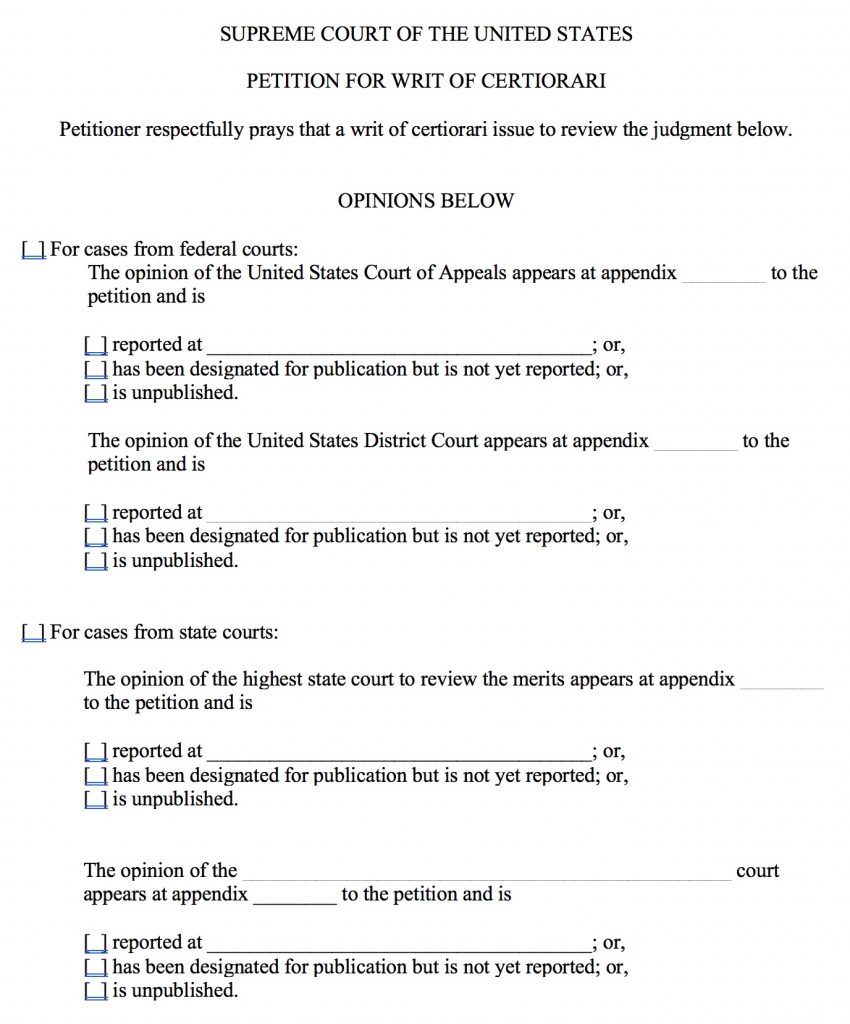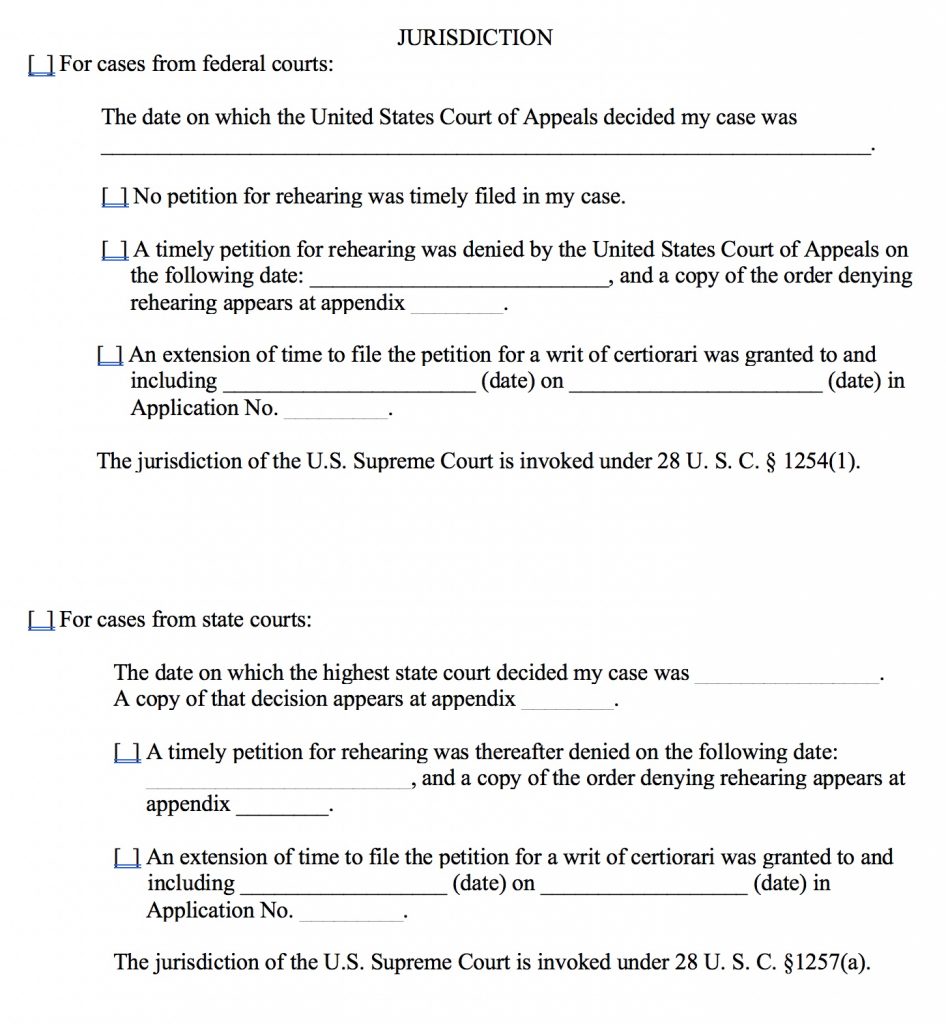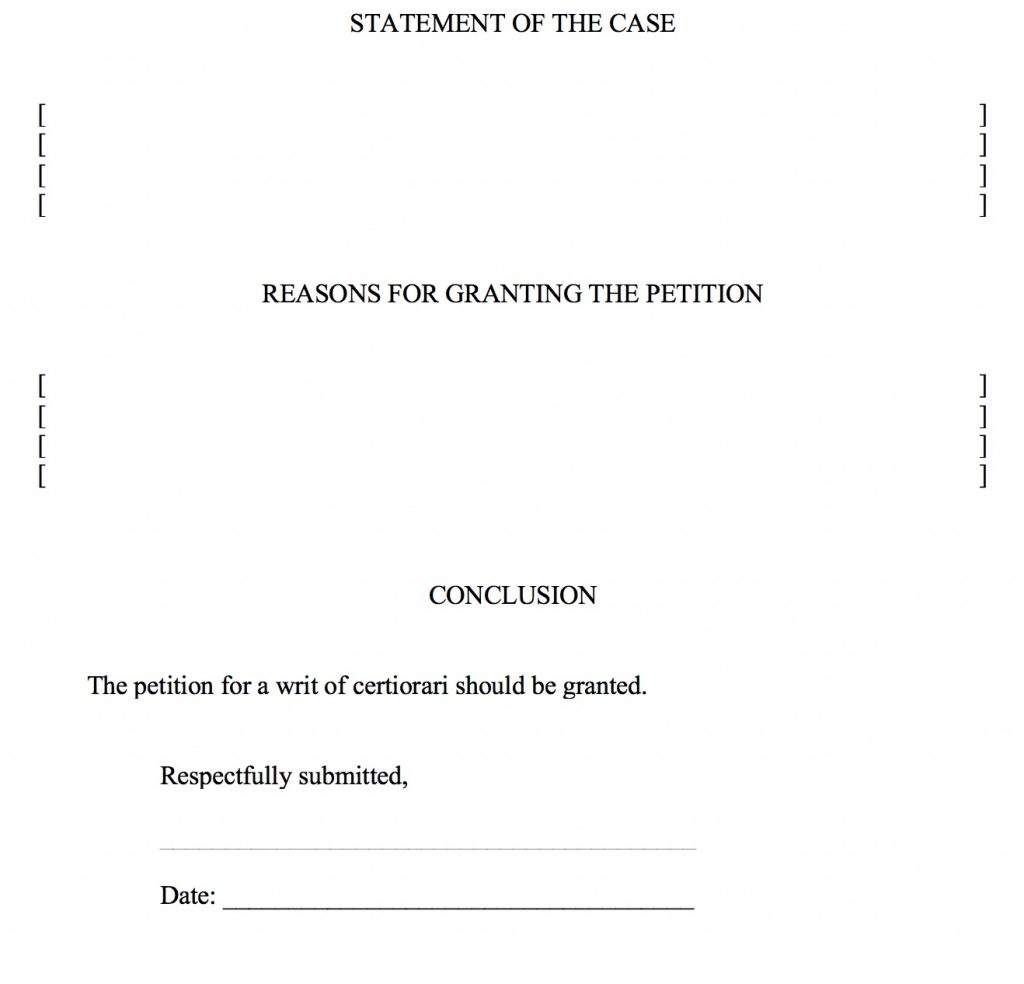CHAPTER 21
⇐ PREVIOUS CHAPTER | NEXT CHAPTER ⇒
Based on Seeking Review in the U.S. Supreme Court,
From the Office of the Clerk
Supreme Court of the United States,
Washington, D.C. 20543
-
Guide for Prospective Indigent Petitioners for Writs of Certiorari.
These instructions and forms are from the U.S. Supreme Court and are designed to assist petitioners who are proceeding in forma pauperis (indigent or unable to pay) and without the assistance of counsel. A copy of the Rules of the U.S. Supreme Court, which establish the procedures that must be followed, can be found by going to the Court’s website, www.supremecourt.gov and by clicking on “court rules” on the left-hand side of the page. A petitioner should read the following Rules of the U.S. Supreme Court very carefully:
- Rules 10 to 16 (Petitioning for certiorari)
- Rule 29 (Filing and service on opposing party or counsel)
- Rule 30 (Computation and extension of time)
- Rules 33.2 and 34 (Preparing pleadings on 8½ x 11 inch paper)
- Rule 39 (Proceedings in forma pauperis)
-
Nature of U.S. Supreme Court Review.
It is important to note that review in the U.S. Supreme Court by means of a writ of certiorari is not a matter of right, but of judicial (the Court’s) discretion. The biggest concern of the U.S. Supreme Court is not to correct errors in lower tribunal decisions, but to decide cases presenting issues of great importance beyond the particular facts and parties involved. The Court grants and hears argument in only about 1 percent of the cases that are filed each term. The vast majority of petitions are simply denied by the Court without comment or explanation. The denial of a petition for a writ of certiorari reflects only that the Court has chosen not to accept the case for review and does not express the Court’s view of the merits of the case.
Every petitioner for a writ of certiorari should read carefully the “Considerations Governing Review on Certiorari” set forth in Rule 10. Important considerations for accepting a case for review include the existence of a conflict between the decision of which review is sought and a decision of another appellate court on the same issue. An important function of the U.S. Supreme Court is to resolve disagreements among lower tribunals about specific legal questions. Another consideration is the importance to the public of the issue.
-
Time for Filing.
A petition for a writ of certiorari must be filed within 90 days from the date of the entry of the final judgment in the U.S Court of Appeals or highest state appellate court (for example, the Florida Supreme Court) or 90 days from the denial of a timely filed petition for rehearing. The issuance of a mandate or remittitur after judgment has been entered has no bearing on the computation of time and does not extend the time for filing. See U.S. Supreme Court Rules 13.1 and 13.3.
Filing in the U.S. Supreme Court means the actual receipt of documents by the Clerk; or their deposit in the U.S. mail, with first-class postage prepaid, on or before the final date allowed for filing; or their delivery to a third-party commercial carrier, on or before the final date allowed for filing, for delivery to the clerk within 3 calendar days. See U.S. Supreme Court Rule 29.2. For an inmate confined in an institution, a document is timely filed if it is deposited in the institution’s internal mail system on or before the last day for filing and is accompanied by a notarized statement or declaration in compliance with 28 U.S.C. § 1746 setting out the date of deposit and stating that first-class postage has been prepaid. See U.S. Supreme Court Rule 29.2.
-
What to File.
Generally, a petitioner must file:
— An original and 10 copies of a motion for leave to proceed in forma pauperis and an original and 10 copies of an affidavit or declaration in support of that motion. See U.S. Supreme Court Rule 39.
— An original and 10 copies of a petition for a writ of certiorari with an appendix consisting of a copy of the judgment or decree the petitioner is asking the U.S. Supreme Court to review, including any order on rehearing, and copies of any opinions or orders by any courts or administrative agencies that have previously considered the case. See U.S. Supreme Court Rule 14.1(i).
— One affidavit or declaration showing that all opposing parties or their counsel have been served with a copy of the papers filed in the U.S. Supreme Court. See U.S. Supreme Court Rule 29.5.
As an exception to the above rules, an inmate confined in an institution and not represented by counsel, only needs to file the following: the original of the motion for leave to proceed in forma pauperis, the affidavit or declaration in support of the motion for leave to proceed in forma pauperis,the petition for a writ of certiorari, and proof of service. In other word, inmates do not need to file the extra copies required in the rules. See U.S. Supreme Court Rule 12.2.
The forms below provide examples of an original motion, affidavit or declaration, and petition, which would be stapled together in that order. There is also an example of a proof of service, which would be included as a detached sheet.
-
Page Limitation.
The petition for a writ of certiorari may not exceed 40 pages, not including the pages that precede Page 1 of the form. The documents required to be contained in the appendix to the petition do not count toward the page limit. See U.S. Supreme Court Rule 33.2(b).
-
Method of Filing.
All documents to be filed in the U.S. Supreme Court must be addressed to the Clerk, Supreme Court of the United States, One First Street, NE, Washington, D. C. 20543, and must be served on opposing parties or their counsel in accordance with Rule 29.
-
-
Additional Information About the Example Forms.
-
Motion for Leave to Proceed In Forma Pauperis-Rule 39
- On the example form provided for the motion for leave to proceed in forma pauperis,a petitioner should leave the case number blank. The number will be assigned by the U.S. Supreme Court clerk when the case is docketed.
- On the line in the case caption for “petitioner,” the petitioner types his or her own name. A pro sepetitioner generally cannot file a petition for someone else, because a pro se litigant can only represent himself or herself, not other people. On the line for “respondent,” the petitioner should type the name of the opposing party in the lower tribunal. If there are multiple respondents, enter the first respondent, as the name appeared on the lower tribunal decision, followed by “et al.” to indicate that there are other respondents. The additional parties must be listed in the “List of Parties” section of the petition.
- If the lower tribunal(s) in the case already granted the petitioner leave to proceed in forma pauperis, the petitioner should check the appropriate space and indicate the court or courts that allowed him or her to proceed in forma pauperis. If none of the lower tribunals granted leave to proceed in forma pauperis, the petitioner should check the block that says that.
- Sign the motion on the signature line.
-
Affidavit or Declaration in Support of Motion for Leave to Proceed In Forma Pauperis.
On the example form provided, a petitioner should answer fully each of the questions. If the answer to a question is “0,” “none,” or “not applicable (N/A),” the petitioner should enter that response. If a petitioner needs more space to answer a question or to explain your answer, he or she should attach a separate sheet of paper, identified with his or her name and the question number. Unless each question is fully answered, the U.S. Supreme Court clerk will not accept the petition. The form must either be notarized or be in the form of a declaration. See Title 28 U.S. Code, Section 1746.
-
Cover Page – Rule 34.
When a petitioner completes the example form for the cover page, he or she should:
- Leave the case number blank. The number will be assigned by the clerk when the case is docketed.
- Complete the case caption the same way as on the motion for leave to proceed in forma pauperis.
- List the court from which the action is brought on the line following the words “on petition for a writ of certiorari to. ”If the case is from a state court, enter the name of the court that last addressed the merits of the case. For example, if the highest state court denied discretionary review, and the state court of appeals affirmed the decision of the lower tribunal, the state court of appeals should be listed. If the case is federal, the United States Court of Appeals that decided the case will always be listed here.
- Enter his or her name, address, and telephone number in the appropriate spaces.
-
Question(s) Presented.
On the example form, the petitioner should give the question or questions that he or she wants the Court to review. The questions must be concise. Questions presented in cases accepted for review are usually no longer than two or three sentences. The purpose of the question presented is to assist the Court in selecting cases. The petitioner should state the issue he or she wants the Court to decide clearly and without unnecessary detail.
-
List of Parties.
On the example form, the petitioner should check either the box indicating that the names of all parties appear in the caption of the case on the cover page, or the box indicating that there are additional parties. If there are additional parties, they should be listed there. Rule 12.6 states that all parties to the proceeding whose judgment is sought to be reviewed shall be deemed parties in the U.S. Supreme Court, and that all parties other than petitioner shall be respondents. The court whose judgment the petitioner seeks to have the U.S. Supreme Court review is not a party.
-
Table of Contents.
On the example form, the petitioner should list the page numbers on which the required portions of the petition appear. The pages should be numbered consecutively, starting with the “Opinions Below” page as page 1.
-
Index of Appendices.
The petitioner should list the description of each document that is included in the appendix beside the appropriate appendix letter, and mark the bottom of the first page of each appendix with the appropriate designation, e.g., “Appendix A.” See Rule 14.1 regarding items to be included in the appendix.
- Federal Courts. If a petitioner is asking the Court to review a decision of a federal court, the decision of the United States Court of Appeals should be designated appendix A. Appendix A should be followed by the decision of the United States District Court and the findings and recommendations of the United States magistrate judge, if there were any. If the United States Court of Appeals denied a timely filed petition for rehearing, a copy of that order should be appended next. If the petitioner is seeking review of a decision in a habeas corpus case, and the decision of either the United States District Court or the United States Court of Appeals makes reference to a state court decision in which the petitioner was a party, a copy of the state court decision must be included in the appendix.
- State Courts. If a petitioner is asking the Court to review a decision of a state court, the decision of which review is sought should be designated appendix A. Appendix A should be followed by the decision of the lower tribunal or agency that was reviewed in the decision designated appendix A. If the highest court of the state in which a decision could be had denied discretionary review, a copy of that order should follow. If an order denying a timely filed petition for rehearing starts the running of the time for filing a petition for a writ of certiorari pursuant to Rule 13.3, a copy of the order should be appended next. As an example, if the state lower tribunal ruled against a pro se party, the intermediate court of appeals affirmed the decision of the lower tribunal, and then the state supreme court denied discretionary review and then denied a timely petition for rehearing, the appendices should appear in the following order:
Appendix A—Decision of State Court of Appeals
Appendix B—Decision of State Trial Court
Appendix C—Decision of State Supreme Court Denying Review
Appendix D—Order of State Supreme Court Denying Rehearing
-
Table of Authorities.
In the example form, the petitioner should list the cases, statutes, books, and articles that are referenced in the petition and the page number in the petition where each authority appears.
-
Opinions Below.
In the example form, the petitioner should indicate whether the opinions of the lower tribunals in his or her case have been published, and if so, the citation for the opinion below. For example, opinions of the U.S. Courts of Appeals are published in the Federal Reporter. So, if the opinion in the petitioner’s case appears at page 100 of volume 30 of the Federal Reporter, Third Series, he or she should indicate that the opinion is reported at 30 F. 3d 100. If the opinion has been designated for publication, but has not yet been published, the petitioner should check the appropriate space. The petitioner should also indicate where in the appendix each decision, reported or unreported, appears.
-
Jurisdiction.
The purpose of the jurisdiction section of the petition is to establish the statutory source for the U.S. Supreme Court’s jurisdiction and the dates that determine whether the petition is timely filed. The example form sets out the pertinent statutes for federal and state cases. The petitioner only needs to provide the dates of the lower tribunal decisions that establish the timeliness of the petition for a writ of certiorari. If an extension of time within which to file the petition for a writ of certiorari was granted, the petitioner must provide the requested information pertaining to the extension. If the petitioner seeks to have the Court review a decision of a state court, he or she must provide the date the highest state court decided the case, either by ruling on the merits or denying discretionary review.
-
Constitutional and Statutory Provisions Involved.
A petitioner should set out or quote word-for-word the constitutional provisions, treaties, statutes, ordinances and regulations involved in the case. If the provisions involved are lengthy, the petitioner should provide their citation and indicate where in the appendix to the petition the text of the provisions appears.
-
Statement of the Case.
The petitioner should provide a concise statement of the case containing the facts material to the consideration of the question(s) presented; the petitioner should summarize the relevant facts of the case and the proceedings that took place in the lower tribunals. Additional pages can be attached if needed, but the statement should be concise and limited to the relevant facts of the case.
-
Reasons for Granting the Petition.
The purpose of this section of the petition is to explain to the Court why it should grant certiorari. It is important for a petitioner to read U.S. Supreme Court Rule 10 and address what compelling reasons exist for the exercise of the Court’s discretionary jurisdiction. A petitioner should try to show not only why the decision of the lower tribunal may be erroneous, but the national importance of having the U.S. Supreme Court decide the question involved. It is also important for a petitioner to show: whether the decision of the court that decided the case is in conflict with the decisions of another appellate court; the importance of the case not only to the petitioner but also to others similarly situated; and the ways the decision of the lower tribunal in the case was erroneous. Again, additional pages can be attached if needed, but the reasons should be as concise as possible, consistent with the purpose of this section of the petition.
-
Conclusion.
The petitioner should enter his or her name and the date that he or she submits the petition.
-
Proof of Service.
A petitioner must serve a copy of the petition on counsel for respondent(s) as required by U.S. Supreme Court Rule 29. If the petitioner serves the petition by first-class mail or by third-party commercial carrier, he or she may use the example proof of service form below. If the United States or any department, office, agency, officer, or employee thereof is a party, the petitioner must also serve the Solicitor General of the United States, Room 5614, Department of Justice, 950 Pennsylvania Ave., N.W., Washington, D.C. 20530-0001. The lower tribunals that ruled on the case are not parties and need not be served with a copy of the petition. The proof of service may be in the form of a declaration pursuant to Title 28 U.S. Code Section 1746.
-
Click here for the content of this form.
Click here for the content of this form.
Click here for the content of this form.
Click here for the content of this form.
Download the Chapter 21 PDF here.
CHAPTER 21
⇐ PREVIOUS CHAPTER | NEXT CHAPTER ⇒

